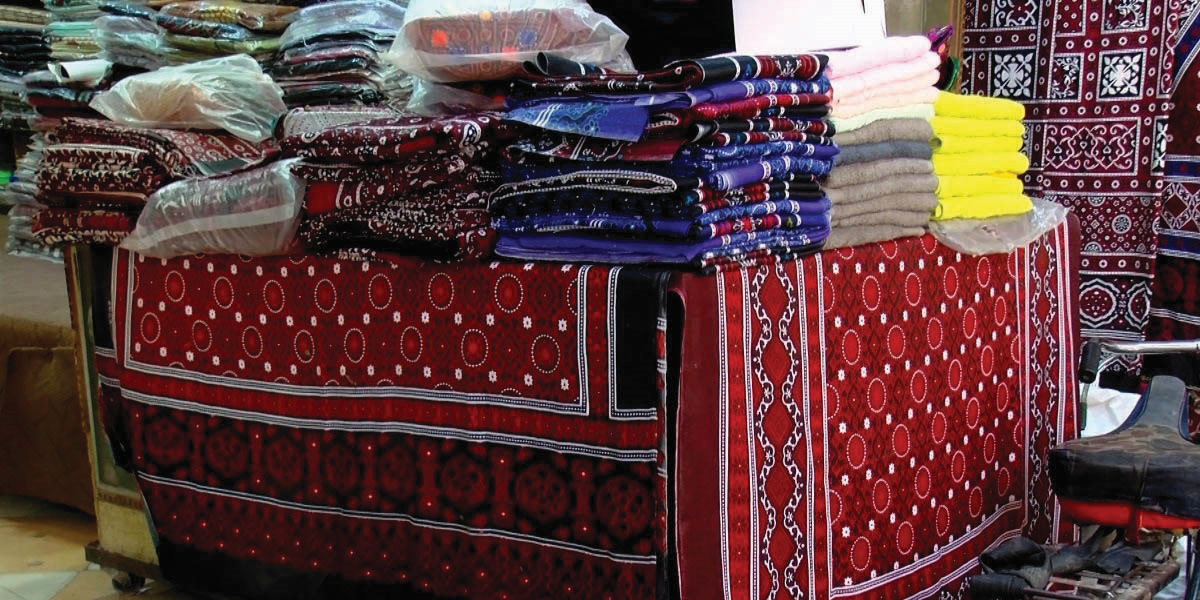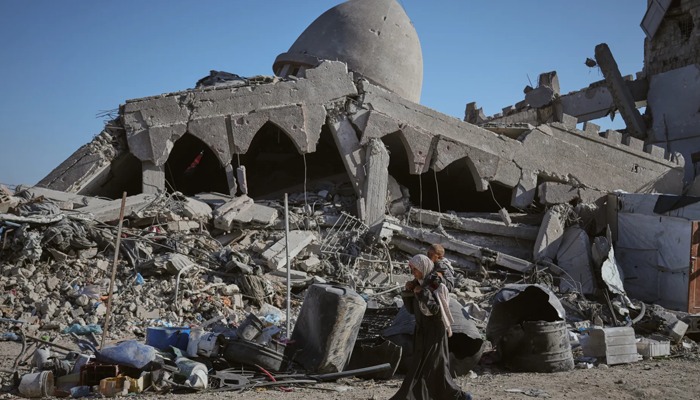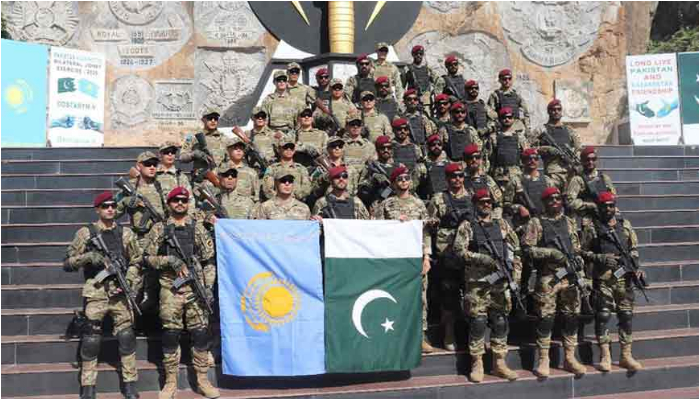Some scholars believe that the floral pattern covering the chest and left shoulder of the Priest-King – the bust of a bearded man discovered during excavations at over 4,000 years old city of Mohenjodaro in Larkana district of Sindh – is an Ajrak.
Ajrak is a traditional shawl of Sindh, a two and a half yards long piece of pure cotton cloth colored and block printed in natural dyes. The art of making this beautiful fabric, which is recognized the world over as the identity of Pakistan in general and Sindh in particular, is, however, dying.
Sukkur, the cultural centre of northern Sindh, used to have over 100 factories of Ajrak. This city now only has one such factory. “These factories began to disappear as people started shifting to the machine-made Ajraks,” says Riaz Mirani, the owner of this lone factory.
“The Ajrak made with artificial cloths and chemical dyes in modern factories cannot match with the beauty and durability of the real Ajrak. However, the demand for handmade Ajrak continues to diminish as it is more expensive than mass-produced Ajraks,” he adds.
Mirani believes that the provincial government of Sindh could do a lot to preserve this dying art by incentivizing the cottage industry engaged in making handmade Ajraks. However, the government and its departments have done nothing to protect this industry, he says.
The craftsman, however, admits that the Sindh Cultural Day, which is celebrated worldwide on the first Sunday of December, has helped his business a little.
“On this day, people not only wear Ajrak and traditional Sindhi caps but they also offer these two cultural products of the province to their friends and family members as gifts. As a result of this activity, we have also benefited and our sales increase particularly during November and December,” he says.
Mirani emphasizes that this yearly activity is not sufficient to sustain this olden tradition.
“Ajrak is the identity of Sindh and Pakistan. The government should take steps to protect the handmade Sindhi Ajrak as it is a gift handed down to us by one of the oldest civilizations of the world,” he says.
How is it made?
Writer Kiran Kasim Ali describes Ajrak making as a complex process involving 21 stages and use of indigenous herbal colors and material. This process starts with washing of cloth. The sheets of damp cloth are then placed on top of a copper vat. They are covered with a quilt to stop the steam from escaping.
This copper vat is heated by a log fire for over a day. This exposure to steam opens the pores of the cloth and makes it softer. This process is called the Khumbh.
In the next stage, the Saaj, the fabric is soaked in a mixture of camel dung, seed oil and water. The dung makes the cloth softer while also acting as a bleaching agent. This stage is very crucial in determining the quality of an Ajrak.
The wet cloth is then tied into an airtight bundle and kept for 5-10 days, depending upon the weather. A distinct smell of mango pickle emanating from the bundle confirms that the fibers have been well soaked with oil.
The cloth is then dried in the sun and it goes through another oil treatment. The oil is curdled with carbonate of soda solution and the cloth is soaked in this mixture to ensure that the fibers receive maximum oil.
After a thorough wash, the cloth is soaked in a mixture made with tamarisk gall [an abnormal growth of tamarisk tree], dried lemons, molasses, castor oil and water. When the cloth dries, it is brought to the workshop for printing.
Wooden blocks are carved from the wood of Kekar trees. The repeat pattern, which gives the design its character, is determined by a grid system.
The pattern is first transferred to the block and then carved with great precision by the block-maker, who uses very simple tools. The blocks are carved in pairs that can register an exact inverted image on the other side.
The cloth goes through the first indigo dye. Usually the master-dyer himself does the dyeing in the vat. The dyed cloth is then taken to the river the next morning before sunrise. All the sheets are submerged in the water for at least an hour.
To a rhythmic count, the craftsmen swish and thrash the Ajraks into the water for an hour or more until the gum and the excess dye have been washed off and the white areas become clear.
In a large copper vat, the Ajraks are dyed with alizarin, a natural red dye. Heated by log fire, the craftsman diligently lifts and immerses the cloth repeatedly for a couple of hours till the desired red color is reached.
While the red Ajraks are spread out to partially dry in the sun, the artisan scoops water to sprinkle on the cloth. The alternate drying and drenching of the cloth bleaches the white areas and deepens and matures the other colors.
This continues for a couple of hours before they are washed, dried and then taken to the workshop. A mud resist mixture is again printed to cover the red areas and immediately sprinkled with the sifted, dried, cow dung to dry the wet areas.
The thick, mud-encrusted cloth is folded and slowly lowered in the indigo vat for the second time. The Ajraks are dried, rolled into a bundle and then taken to the river for the final wash. The craftsmen fold the Ajraks while still damp and put them under a weight as they become dry.



















